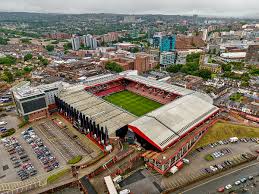Historic Bramall Lane Embraces Modern Era with Safe Standing and Expansion Plans

A New Chapter for World’s Oldest Professional Football Stadium
Sheffield United has confirmed a significant development at Bramall Lane, with approximately 3,000 safe standing positions to be installed at the back of the Kop and a section of the away end. This major shift in the matchday experience has received backing from key safety authorities.
The development comes after well-documented issues with sections of fans standing in the Kop stand, which has previously faced closure threats. The club has been spending approximately £3,000 per game on additional stewarding requirements, with Chief Executive Stephen Bettis noting that the situation has seen periods of improvement followed by regression.
Comprehensive Development Plans
The stadium is set for growth on multiple fronts. The main south stand will receive a second tier, adding 5,400 new seats and becoming the stadium’s dominant structure. Additionally, the club is pursuing residential developments, with plans for 45 flats south of the stadium and 52 more in the north-east section.
Following a US-consortium-led takeover in December 2024, which is expected to strengthen the club’s long-term future, many supporters anticipated these development projects would gain momentum.
Historical Significance and Modern Amenities
Bramall Lane holds the distinction of being the oldest major stadium still hosting professional association football matches. It is one of only two grounds that has hosted England football internationals, an England Test cricket match, and an FA Cup Final.
Sheffield United CEO Stephen Bettis has emphasized that these developments will enhance the overall Bramall Lane experience, noting that extensive planning and cooperation between key stakeholders have gone into these improvements.
The installation work for the safe standing areas is currently underway and is expected to be completed before the end of 2025, marking another milestone in the stadium’s storied history.
